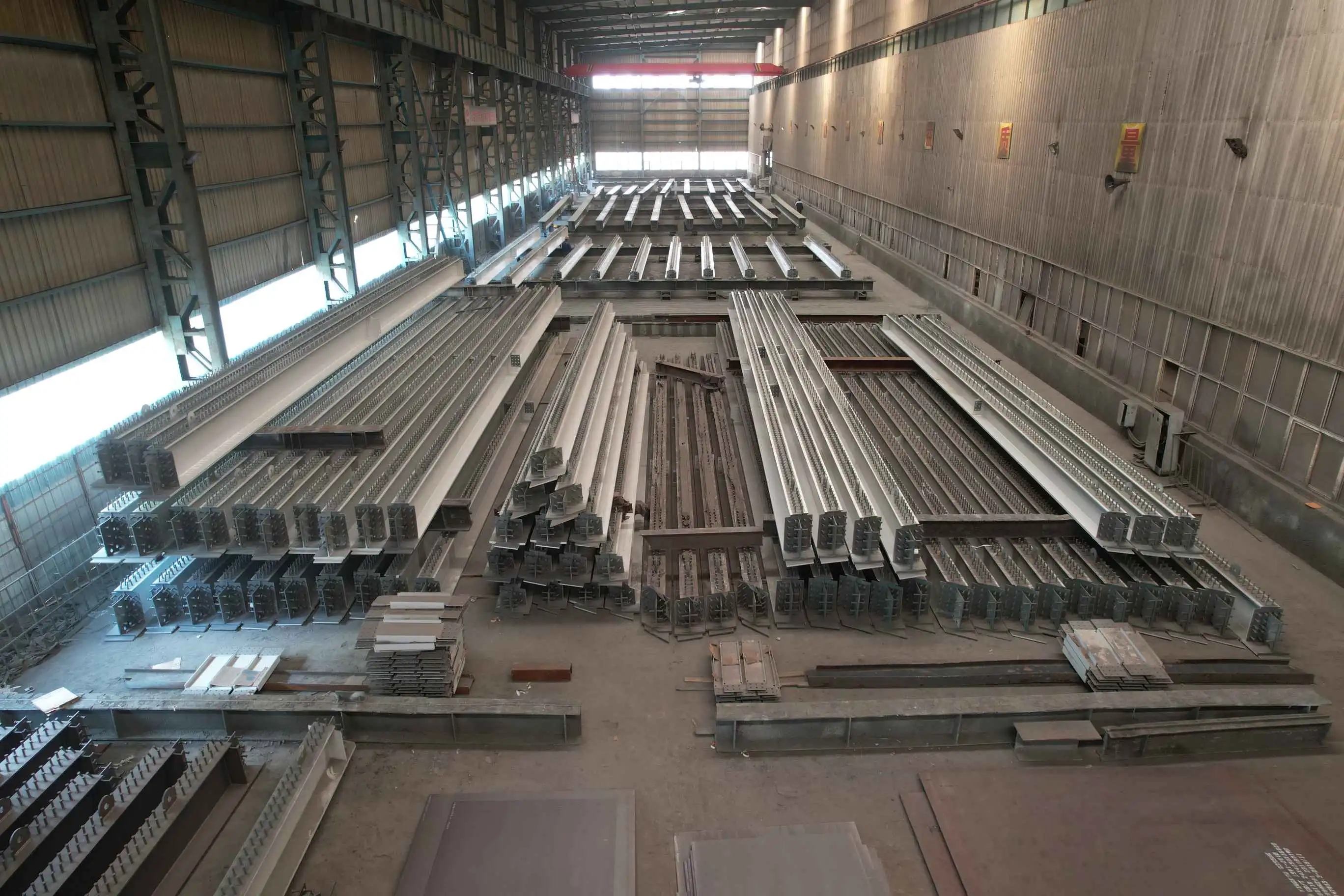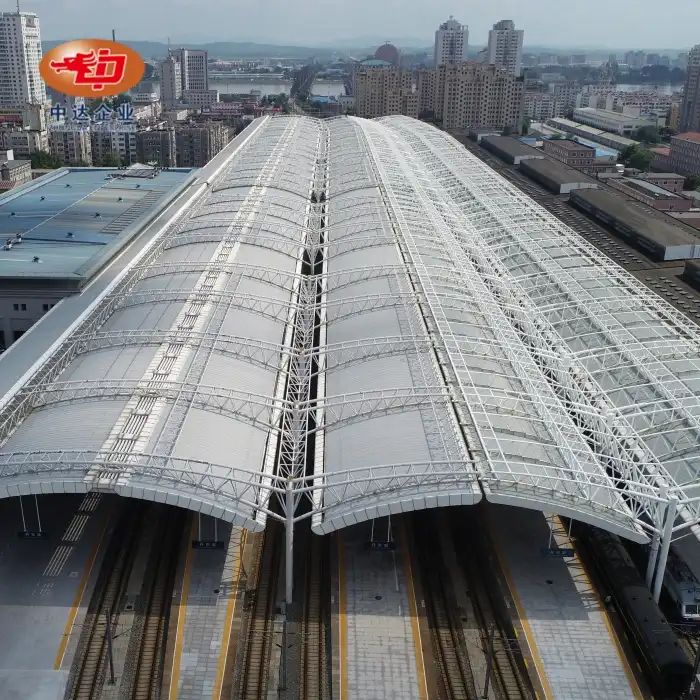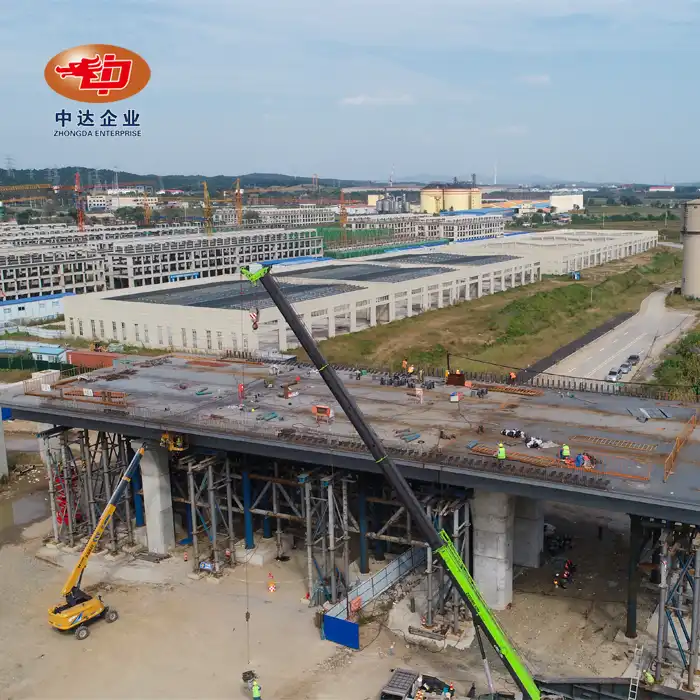
How Are Steel-Concrete Composite Beams Customized in Section and Material?
Steel-concrete composite beams are revolutionizing structural engineering, offering unparalleled strength and versatility. At Zhongda Steel, we've mastered the art of customizing these beams to meet diverse project needs. By combining the compressive strength of concrete with the tensile strength of steel, we create beams that are stronger, lighter, and more cost-effective than traditional options. Our customization process focuses on two key areas: section design and material selection. We tailor the beam's cross-section to optimize load distribution and minimize weight, while carefully choosing materials to enhance durability and performance. This approach allows us to deliver bespoke solutions that excel in various applications, from skyscrapers to bridges.
Innovative Section Design for Optimal Performance
Symmetrical vs. Asymmetrical I-Beam Sections
When it comes to steel-concrete composite beams, the section design plays a crucial role in determining the beam's performance. At Zhongda Steel, we offer both symmetrical and asymmetrical I-beam sections to cater to different load-bearing requirements. Symmetrical I-beams provide balanced strength and are ideal for uniform load distribution. However, our innovative asymmetrical designs, featuring a narrower top flange and wider bottom flange, optimize the synergy between concrete and steel. This configuration enhances the composite action, allowing for more efficient load transfer and reducing the overall structural weight.
Box Sections for Enhanced Torsional Rigidity
For projects demanding superior torsional rigidity, we recommend our box section composite beams. These closed profiles offer exceptional resistance to twisting forces, making them perfect for long-span structures or those subject to uneven loading. Our box sections can be customized with various dimensions and wall thicknesses, ensuring the right balance between strength and weight for each unique application.

Web Perforation Techniques
To further optimize our steel-concrete composite beams, we employ advanced web perforation techniques. By strategically placing openings in the web of the steel section, we can reduce weight without compromising structural integrity. These perforations also facilitate the integration of building services, such as HVAC ducts and electrical conduits, streamlining the construction process. Our engineers use sophisticated software to determine the optimal size, shape, and placement of these openings, ensuring maximum efficiency and performance.
Material Selection for Superior Strength and Durability
High-Performance Steel Grades
At Zhongda Steel, we understand that the choice of steel grade significantly impacts the performance of composite beams. While Q235B steel is a popular option for its balance of strength and cost-effectiveness, we also offer higher-strength grades for more demanding applications. Our range includes Q345B, Q390B, and even ultra-high-strength steels like S460 and S690. These advanced materials allow for thinner sections, reducing overall beam weight without sacrificing load-bearing capacity. Our expertise in working with these high-performance steels ensures that we can deliver the most efficient and economical solution for each project.
Specialized Concrete Mixes
The concrete component of our composite beams is equally important. We work closely with leading concrete suppliers to develop specialized mixes that complement the steel section perfectly. For projects requiring reduced dead loads, we offer lightweight high-strength concrete options. These mixes incorporate innovative aggregates and admixtures to achieve impressive compressive strengths while maintaining a lower density. Additionally, we can incorporate fiber-reinforced concrete to enhance crack resistance and improve long-term durability, particularly in structures subject to dynamic loads or harsh environmental conditions.
Advanced Corrosion Protection Systems
To ensure the longevity of our steel-concrete composite beams, we employ state-of-the-art corrosion protection systems. For harsh environments or coastal applications, we offer a proprietary hot-dip galvanization process followed by a fluorocarbon coating. This dual-layer protection provides exceptional resistance to corrosion, UV radiation, and chemical attack. Our in-house coating facility allows us to maintain strict quality control, ensuring that every beam leaves our factory with the highest level of protection against environmental degradation.

Enhancing Composite Action through Interface Design
Optimized Shear Connector Distribution
The effectiveness of steel-concrete composite beams relies heavily on the transfer of forces between the steel and concrete components. At Zhongda Steel, we pay meticulous attention to the design and distribution of shear connectors. Our engineers use advanced finite element analysis to determine the optimal placement and density of these connectors, ensuring maximum composite action throughout the beam's length. By tailoring the connector layout to the specific load conditions of each project, we can achieve superior strength and stiffness while minimizing material usage.
Innovative Bonding Technologies
In addition to traditional shear studs, we're continually exploring innovative bonding technologies to enhance the steel-concrete composite beam interface. One such advancement is the use of epoxy-based adhesives in conjunction with mechanical connectors. This hybrid approach not only improves the shear transfer capacity but also provides a more uniform stress distribution along the interface. For projects with strict vibration control requirements, this method can significantly enhance the beam's damping properties, leading to improved comfort and structural performance.
Surface Preparation Techniques
The quality of the bond between steel and concrete is crucial for optimal composite action. Our surface preparation techniques go beyond standard cleaning practices to ensure maximum adhesion. We employ advanced shot blasting methods to create a controlled roughness profile on the steel surface, significantly increasing the contact area with the concrete. For critical applications, we can also apply speciality primers that chemically enhance the bond strength. These meticulous preparation steps result in a more robust composite section, capable of withstanding higher loads and offering improved long-term performance.
Conclusion
Customization of steel-concrete composite beams is a complex process that demands expertise in both materials science and structural engineering. At Zhongda Steel, we leverage our decades of experience and cutting-edge technology to deliver tailored solutions that push the boundaries of what's possible in construction. From innovative section designs to advanced material combinations and interface optimization, our approach ensures that each composite beam is perfectly suited to its intended application, offering unmatched performance, efficiency, and durability.
Contact Us
Ready to elevate your next project with custom steel-concrete composite beams? Contact Zhongda Steel today at Ava@zd-steels.com. Our team of experts is standing by to help you design and implement the perfect structural solution, backed by our commitment to innovation, quality, and customer satisfaction. Don't settle for off-the-shelf options - experience the Zhongda difference and build with confidence.
References
Johnson, R.P. (2018). Composite Structures of Steel and Concrete: Beams, Slabs, Columns and Frames for Buildings. Wiley-Blackwell.
Nie, J., & Eatherton, M.R. (2020). Steel-Concrete Composite Structures: Analysis and Design. CRC Press.
Oehlers, D.J., & Bradford, M.A. (2019). Elementary Behaviour of Composite Steel and Concrete Structural Members. Butterworth-Heinemann.
Vayas, I., & Iliopoulos, A. (2017). Design of Steel-Concrete Composite Bridges to Eurocodes. CRC Press.
Wang, Y.C. (2018). Steel and Composite Structures: Behaviour and Design for Fire Safety. CRC Press.
Nellinger, S., & Odenbreit, C. (2021). Steel-Concrete Composite Beams for Buildings: Design to Eurocode 4. ICE Publishing.











 Column_1745405748146.webp)

